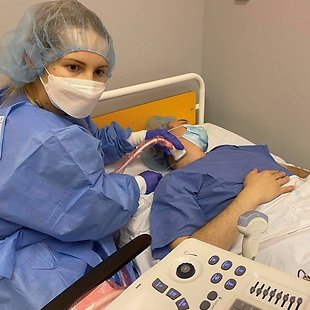Regional anaesthesia in adults
Regional anesthesia is progressively preferred method in anesthesiology. It provides patients with many advantages in both pre and postoperative period. One of the prerequisites for practicing regional anesthesia is a good knowledge of the area topography, work with ultrasound image, basic indications and contraindications for the specific nerve blocks and recognizing possible complications. The goal of this algorithm is to guide a participant through possibilities for regional anesthesia of the upper extremity and the dealing with possible complications.
Review
The algorithm "Regional anaesthesia in an adult patient" perfectly describes the decision-making process and the practical implementation of peripheral nerve block for shoulder arthroscopy. It draws attention to the possibility of a specific complication in connection with a given blockade and its solution. It also offers an alternative to other peripheral nerve blocks. The choice of combined anesthesia provides the patient with quality postoperative analgesia and thus improves his comfort. This is a very beneficial algorithm fully usable in clinical practice. I believe that the spectrum of similar algorithms with the theme of regional anesthesia will expand in the future.
Sources
Peter Marhofer, MD. Ultrasound Guidance in Regional Anaesthesia. Principles and Practical Implementation. Second edition





